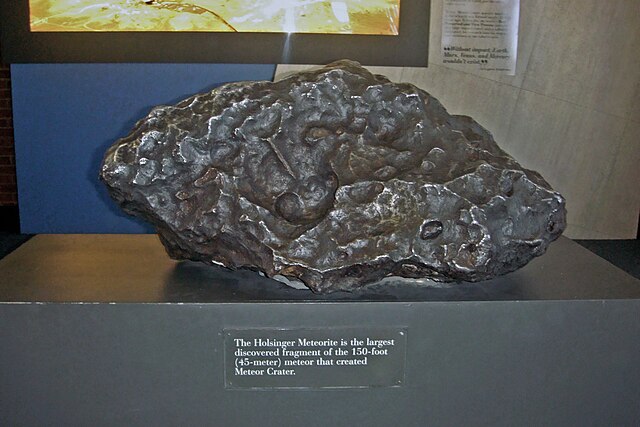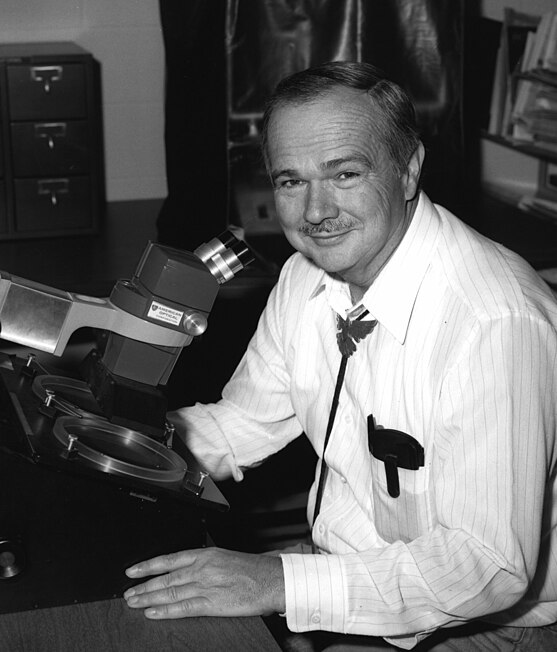Meteor Crater or Barringer Crater is an impact crater about 37 mi (60 km) east of Flagstaff and 18 mi (29 km) west of Winslow in the desert of northern Arizona, United States. The site had several earlier names, and fragments of the meteorite are officially called the Canyon Diablo Meteorite, after the adjacent Canyon Diablo.
Meteor Crater
The Holsinger fragment, at roughly 0.8 m (2½ ft) across, is the largest discovered piece of the meteorite that created Meteor Crater, and it is exhibited in the crater visitor center.
Looking into the crater from the north rim: The rust-colored area on the far (south) rim is where the last drilling for the meteorite occurred, in 1929. This is where Daniel M. Barringer believed the bulk of the meteorite was buried. Rock around the south rim is visibly uplifted.
Fragment of the Cañon Diablo Meteorite
An impact crater is a depression in the surface of a solid astronomical body formed by the hypervelocity impact of a smaller object. In contrast to volcanic craters, which result from explosion or internal collapse, impact craters typically have raised rims and floors that are lower in elevation than the surrounding terrain. Impact craters are typically circular, though they can be elliptical in shape or even irregular due to events such as landslides. Impact craters range in size from microscopic craters seen on lunar rocks returned by the Apollo Program to simple bowl-shaped depressions and vast, complex, multi-ringed impact basins. Meteor Crater is a well-known example of a small impact crater on Earth.
500-kilometre-wide (310 mi) crater Engelier on Saturn's moon Iapetus
Recently formed (between July 2010 and May 2012) impact crater on Mars showing a pristine ray system of ejecta
50,000-year-old Meteor Crater east of Flagstaff, Arizona, U.S. on Earth
Eugene Shoemaker, pioneer impact crater researcher, here at a crystallographic microscope used to examine meteorites








